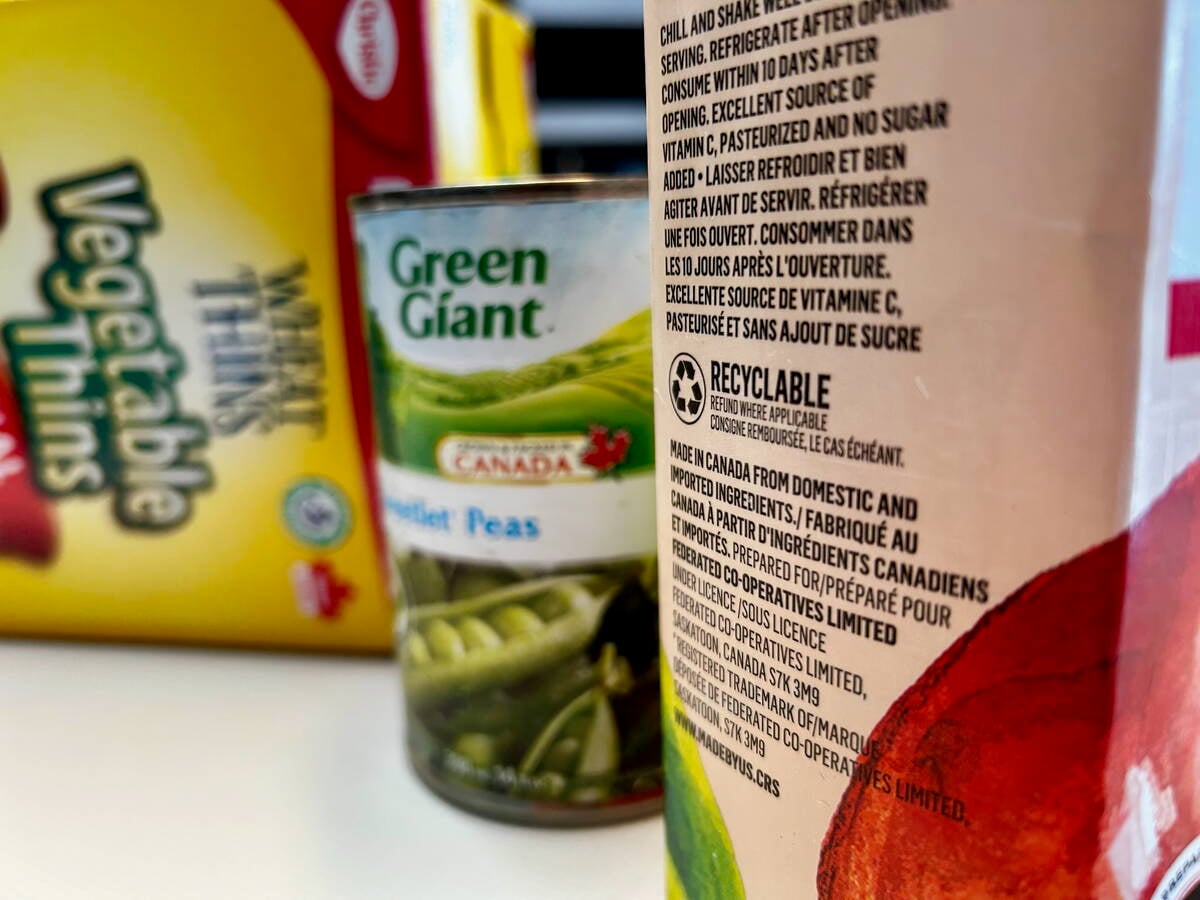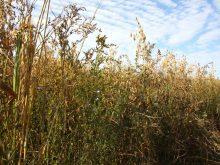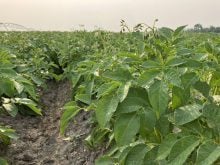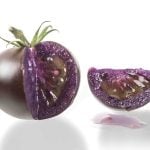Researchers at the Canada-Manitoba Crop Diversification Centre (CMCDC) are looking for ideas that would lessen the labour of removing green potato vines in the fall.
The practice is pitched as a control measure against pathogens such as black dot, verticillium wilt, early blight and other diseases that carry over in potato crop residue.
Read Also

Unclear food labels hinder Canada’s ‘buy local’ surge
“Maple-washing” on Canadian food packaging makes label claims hard to keep straight and hurts both farmers and consumers trying to buy Canadian, economist says.
Why it matters: A combination of vine removal and rotation could lessen reliance on chemical control products, but in practice, the interruption to work flow makes it a difficult proposition.
Zachary Frederick, applied potato research agronomist at the diversification centre near Carberry, said removal lowers disease pressure. Combined with rotation, many of those diseases can be kept at bay.
“A lot of these fungi require the vine to break down to return the inoculum to the soil, especially verticillium and black dot. (They’re) poor competitors with other fungi, so they get squatter’s rights by infecting the plant early in the season, colonizing it while it’s healthy and alive, and then they kill the plant and grow their micro-sclerotia before the other fungi,” he said.

Black dot can die off relatively quickly without that haven, and with a three- to five-year rotation between potato crops, he added.
In Manitoba, with its limited list of commercial horticulture species, only nightshade weeds would remain as possible hosts for that pathogen in the field, Frederick noted.
“If we remove those vines with the fresh inoculum, the next time around it’s the old stuff (we’re dealing with) that’s weaker and most of it is dead,” he said. “And if you do this through multiple rotations, like three times on a three-year rotation, that inoculum is now nine years old, if any of it is still alive.”
With few other hosts for black dot, vines could be disposed of through composting or be buried in a non-potato producing field.
However, Frederick said vine removal is a hard sell for producers who are short of time in fall.
“Harvest is a very busy operation in terms of actual time spent and usually it’s quite rushed,” he said. “In the past few years we’ve had some very difficult harvests.”

In 2019, for example, potato harvest was stymied by a Thanksgiving weekend blizzard and high precipitation. Early frosts and poor harvest conditions in 2019 and 2020 reduced crop yields, led to unharvested acres and fostered spoilage in potatoes that did make it to the bunker.
“In abbreviating the window, it’s deeply unpopular to add more tasks to do,” Frederick said.
The CMCDC has an ongoing project looking at that labour issue. One proposal would have used a modified baler to remove vines, although potential damage to equipment quickly trashed that idea.
Another suggestion would employ a cutter to slice vines just under the surface, “which is great because that crown where the potato comes out of the ground is where most of your verticillium and your black dot is, so we’d be getting rid of the worst of the worst,” Frederick said.
Further outreach to the potato sector is expected on the project.















